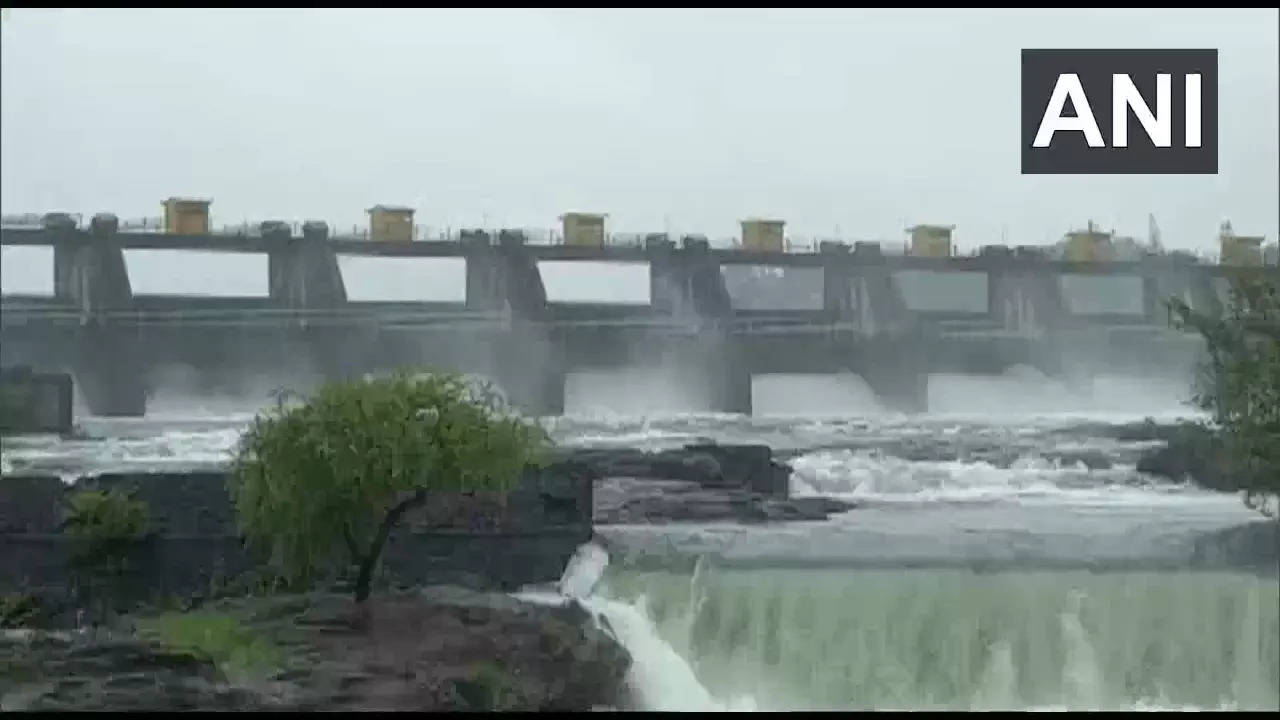Pune sees a steep fall in collective water stocks; no immediate plans to cut water supply
The drinking water stock in Pune is at a three-year low with the current collective stock in major reservoirs of the city falling to its lowest level since 2019. The available water stock as of June 21 was 13.15 per cent of the total stock while the ten-year average for this period is 23.76 per cent.

Pune water stocks at a three-year low.
Photo : ANI
Pune: The drinking water stock in Pune is at a three-year low with the current collective stock in major reservoirs of the city falling to its lowest level since 2019. According to the Water Resources Department’s data, the available water stock as of June 21 was 13.15 per cent of the total stock while the ten-year average for this period is 23.76 per cent.
Pune region which comprises dams in Pune, Kolhapur, Satara, Sangli, and Solapur districts has suffered the sharpest decline in the reservoir stock this year with respect to the 10-year average in Maharashtra till June 21.
Like Pune district, Pune and Pimpri-Chinchwad stocks were the second-lowest since 2018. In the Khadakwasla irrigation circle, the collective water stock in the four dams has dropped to a three-year low of 3.4 thousand million cubic feet (TMC).
The four dams supplying water to the city - Temghar, Varasgaon, Khadakwasla, and Panshet - had a collective stock of 7.7 TMC on the same day last year and 5.78 TMC in 2020. They have not recorded any increase in storage levels so far because of scarce rain (none of the areas reported more than 50 mm rainfall since June 1).
The live water reserve in the main dams of Pune city was Varasgaon with 363.13 million cubic metres (MCum), Panshet with 301.61 Mcum, Bhama Asked with 217 MCum, Pavana 274.3 MCum, and Khadawasla with 55.91 MCum.
The authorities have no immediate plans for water cuts as the existing storage could meet the city's water needs for the next one month. Officials said they will keep an eye on the water levels, as well as monsoon activity, in the catchment areas for the next few days before forming a further action plan.
Poor pre-monsoon rainfall in the state and warmer than usual summer that led to greater evaporation from these surface storage facilities in the last three months are some major reasons cited by the officials of the irrigation department.
Dams in Amravati, Aurangabad, and Nashik regions have maintained better stocks than their respective 10-year average for the same period. Konkan region has normal stock this year but reservoirs in the Nagpur region presently hold marginally lower stock than the ten-year-average, the data suggested.
The city lifts around 1.5 TMC water from Khadakwasla every month. Taking into account the current stock of over 3 TMC in the four dams, the storage can last for more than a month. The city also gets water from Bhama Askhed, which is the fifth water source for the city. On Monday, the stock in Bhama Askhed was at 2.5 TMC (32%).
Water release in Mutha canal was reduced to 500 cusecs from 1,150 cusecs earlier on June 2o(Monday).
Trending:
End of Article
Subscribe to our daily Newsletter!
Related News





Punekars To Get New Coworking Centre Soon; Good News For Gurugram Too

Pune: Auto Driver Turns Rickshaw Into Mobile Garden, Offers 'Cool' Rides to Passengers

Pune Techie Jumps to Death with 4-Year-Old Son, Was Under Mental Health Treatment

Pune: 50 Students Hospitalised Due To Food Poisoning After Dinner At JEE-NEET Coaching Centre

Over 50 Kids Fall Sick After Consuming Dinner At Private Coaching In Pune; Probe On








